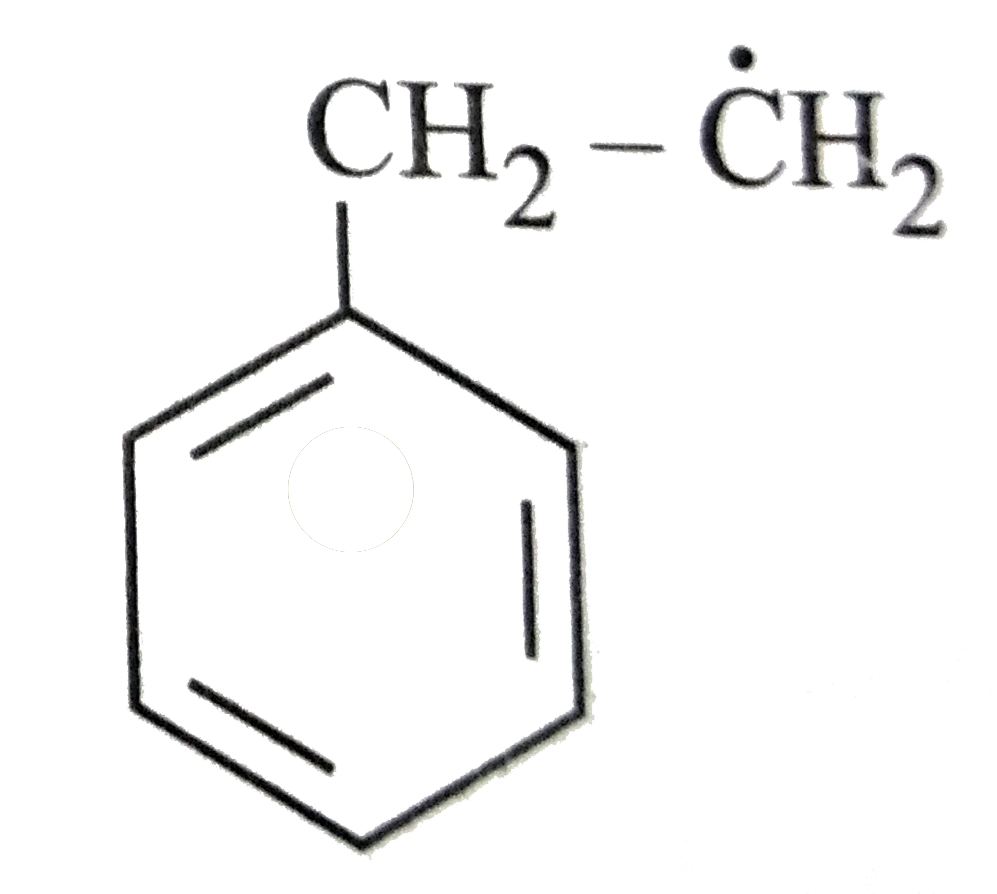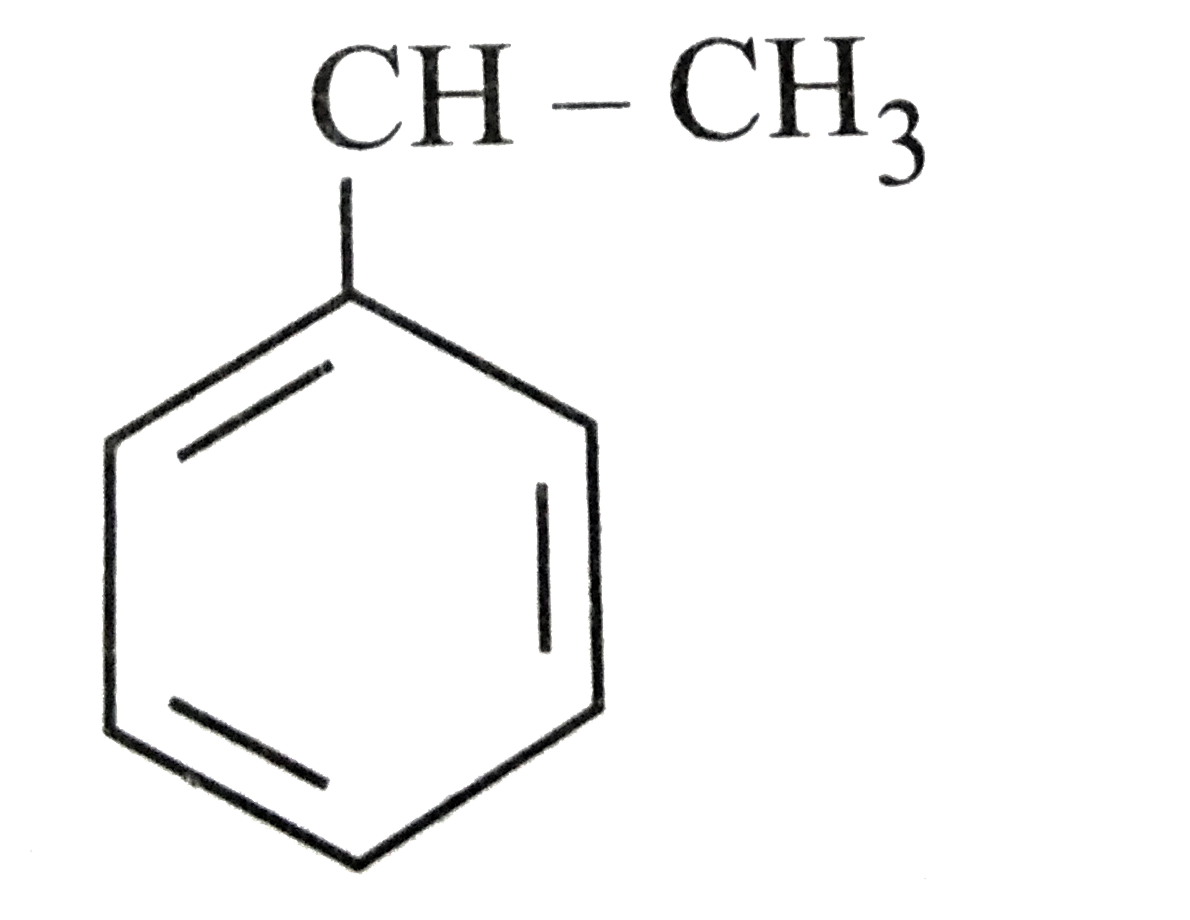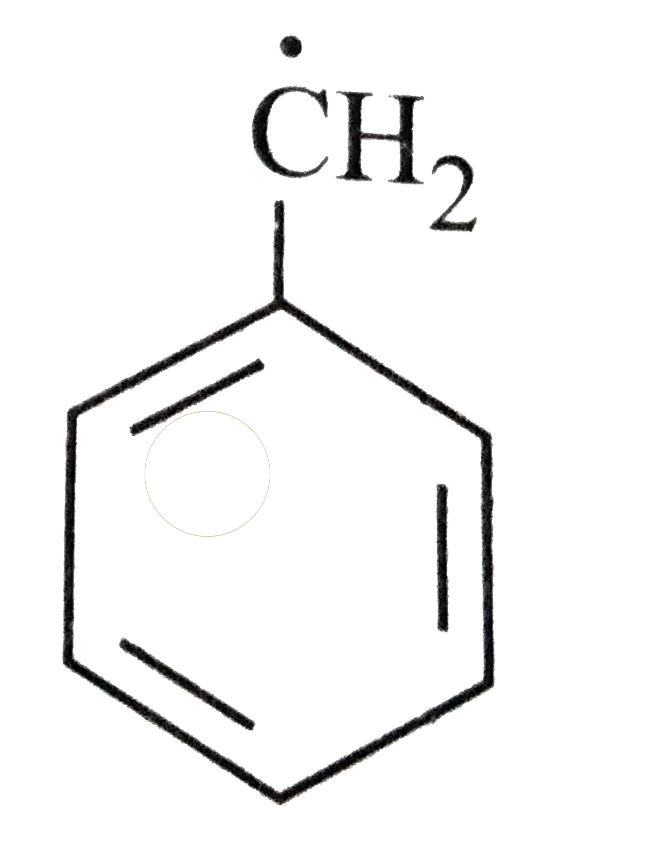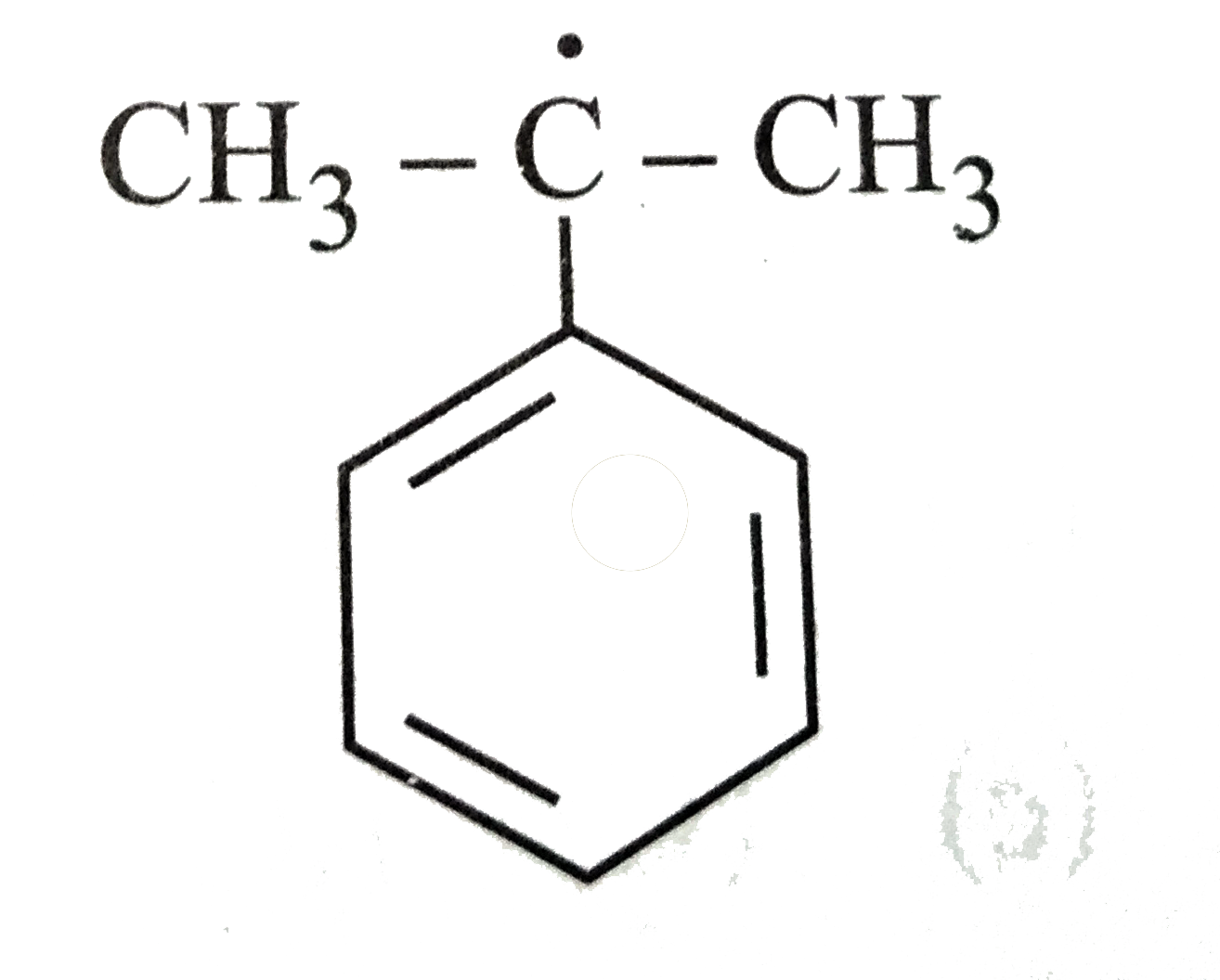The most stable free radical among the following is




The correct Answer is:D
To determine the most stable free radical among the given options, we need to analyze the stability of each free radical based on the following principles:
1. Degree of Substitution: Free radicals are more stable when they are more substituted. Tertiary (3°) radicals are more stable than secondary (2°), which are more stable than primary (1°), and methyl radicals are the least stable.
2. Resonance Stabilization: Free radicals that can delocalize their unpaired electron through resonance are more stable than those that cannot.
3. Hyperconjugation: The presence of adjacent C-H bonds can stabilize free radicals through hyperconjugation.
Step 1: Identify the Types of Free Radicals
- Examine each option to identify whether they are primary, secondary, or tertiary radicals, and check if they have resonance stabilization.
Step 2: Analyze Each Free Radical
- Option A: This is a primary free radical. It has no resonance stabilization and is the least stable.
- Option B: This is a secondary free radical. It has some resonance stabilization but is less stable than a tertiary radical.
- Option C: This is a tertiary free radical. It is more stable than both primary and secondary radicals due to hyperconjugation and the inductive effect from surrounding alkyl groups.
- Option D: This free radical is resonance-stabilized. It can delocalize the unpaired electron, making it more stable than the others.
Step 3: Compare Stability Factors
- Compare the degree of substitution and resonance stabilization:
- Tertiary radicals (Option C) are generally more stable than secondary (Option B) and primary (Option A).
- If Option D has significant resonance stabilization, it may surpass the stability of a tertiary radical.
Step 4: Conclusion
- After analyzing all options, if Option D has both resonance stabilization and a high degree of substitution, it would be the most stable free radical among the given choices.
Final Answer:
The most stable free radical among the given options is Option D.
- Examine each option to identify whether they are primary, secondary, or tertiary radicals, and check if they have resonance stabilization.
- Option A: This is a primary free radical. It has no resonance stabilization and is the least stable.
- Option B: This is a secondary free radical. It has some resonance stabilization but is less stable than a tertiary radical.
- Option C: This is a tertiary free radical. It is more stable than both primary and secondary radicals due to hyperconjugation and the inductive effect from surrounding alkyl groups.
- Option D: This free radical is resonance-stabilized. It can delocalize the unpaired electron, making it more stable than the others.
- Compare the degree of substitution and resonance stabilization:
- Tertiary radicals (Option C) are generally more stable than secondary (Option B) and primary (Option A).
- If Option D has significant resonance stabilization, it may surpass the stability of a tertiary radical.
- After analyzing all options, if Option D has both resonance stabilization and a high degree of substitution, it would be the most stable free radical among the given choices.
The most stable free radical among the given options is Option D.
Topper's Solved these Questions
- BOOK - NCERT FINGERTPS ENGLISHCHAPTER - ORGANIC CHEMISTRY-SOME BASIC PRINCIPLES AND TECHNIQUES EXERCISE - Exemplar Problems12videos
ORGANIC CHEMISTRY-SOME BASIC PRINCIPLES AND TECHNIQUES
- BOOK - NCERT FINGERTPS ENGLISHCHAPTER - ORGANIC CHEMISTRY-SOME BASIC PRINCIPLES AND TECHNIQUES EXERCISE - Assertion & Reason13videos
ORGANIC CHEMISTRY-SOME BASIC PRINCIPLES AND TECHNIQUES
- BOOK - NCERT FINGERTPS ENGLISHCHAPTER - HYDROGEN EXERCISE - Assertion And Reason15videos
HYDROGEN
- BOOK - NCERT FINGERTPS ENGLISHCHAPTER - PRACTICE PAPER 1EXERCISE - Practice Paper 144videos
PRACTICE PAPER 1
Similar Questions
Knowledge Check
- Question 1 - Select One
The most stable free radical is
A⋅CH3BCH3⋅CH2C(CH3)2⋅CHD(CH3)3⋅C
Most stable radical among the following is :
View SolutionLeast stable radical among the following is :
View SolutionMost stable radical among the following is
View SolutionWhich is the most stable conformer among the following ?
View SolutionThe most stable carbanion among the following is
View SolutionMost stable carbanion among the following is
View SolutionMost stable carbocation among the following is
View Solution

